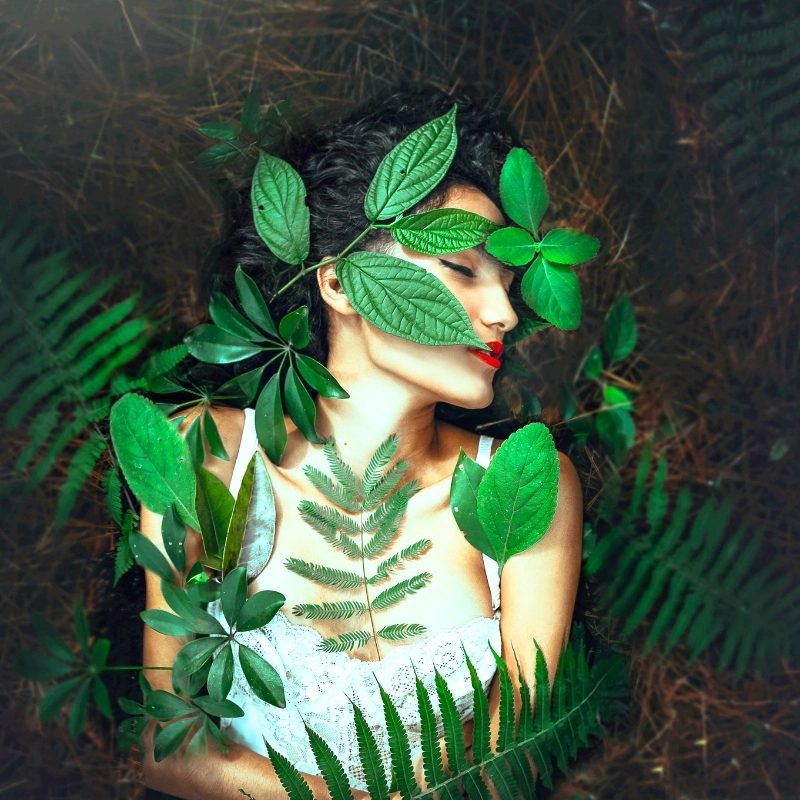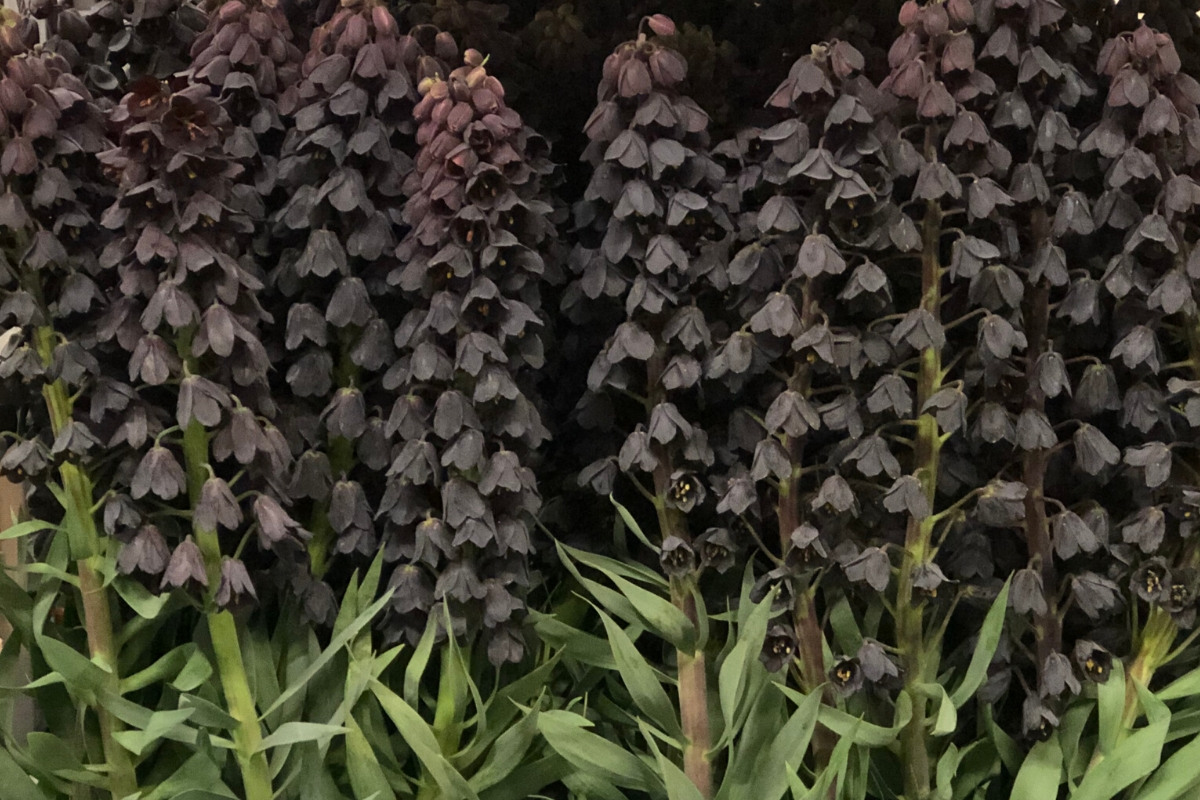Nature is full of bizarre surprises, and plants are no exception. From flesh-eating flowers to parasitic vines, the world is home to some truly eerie vegetation. In this article, we unveil the 10 strangest plants in the world—botanical oddities that seem more like something from science fiction than real life. Whether it’s their shocking appearance, spooky behavior, or downright deadly traits, these weird plants are bound to haunt your imagination. Get ready to explore the most unusual plants nature has to offer!
Top 10 Weirdest and Strangest Plants on Earth
- White Baneberry (Actaea pachypoda)
- Japanese Blood Grass (Imperata cylindrica)
- Witches’ Hair (Cuscuta)
- Hemlock (Conium maculatum)
- Carrion Plant (Stapelia gigantea)
- Cobra Lily (Darlingtonia californica)
- Corpse Flower (Amorphophallus titanum)
- Venus Flytrap (Dionaea muscipula)
- Black Bat Plant (Tacca chantrieri)
- Ghost Plant (Monotropa uniflora)
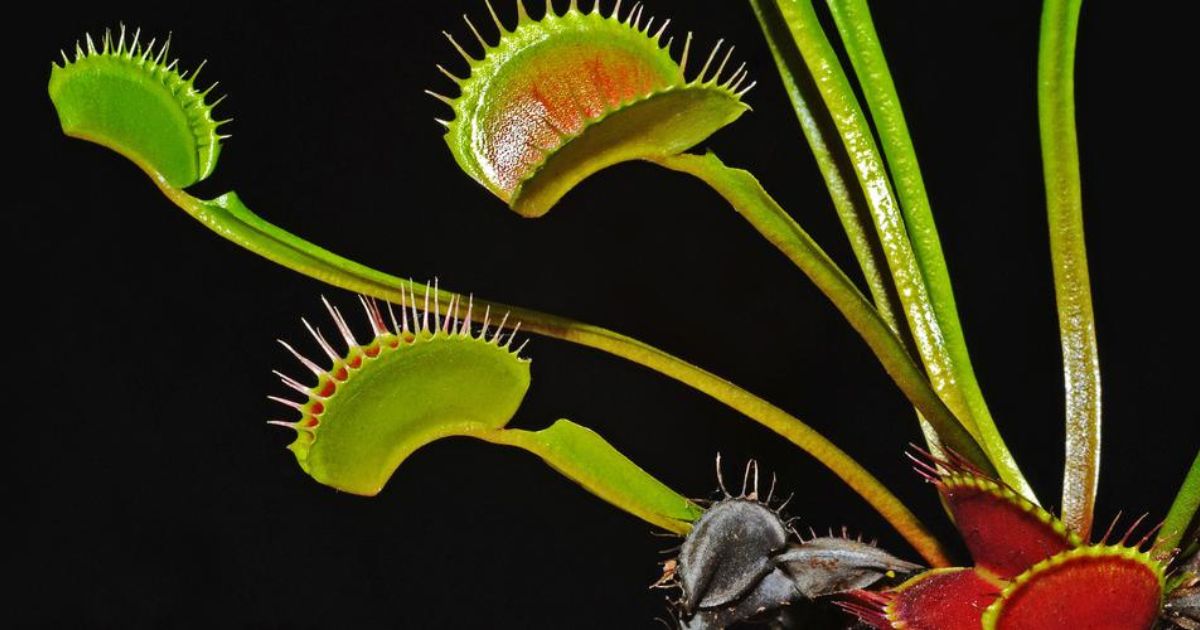
Photo by University of Tasmania.
10 Strangest Plants That Dwell On Our Planet
If our planet weren't impressive enough with new plant species being found daily, these 10 strangest plants will undoubtedly cause a haunting impression. Be aware that they are here to make a shocking statement and let you know that amazingly unique plants live on our earth.
1. White Baneberry (Actaea Pachypoda)
White baneberry is a small, ball-shaped plant native to North American forests. It is also known as a doll’s eye because its specially shaped fruits give the plant a weird look and feel. Its red, thick stems also look very attractive, but it's essential to consider that the fruits of white baneberry are toxic. This plant is one of the strangest plants in the world!
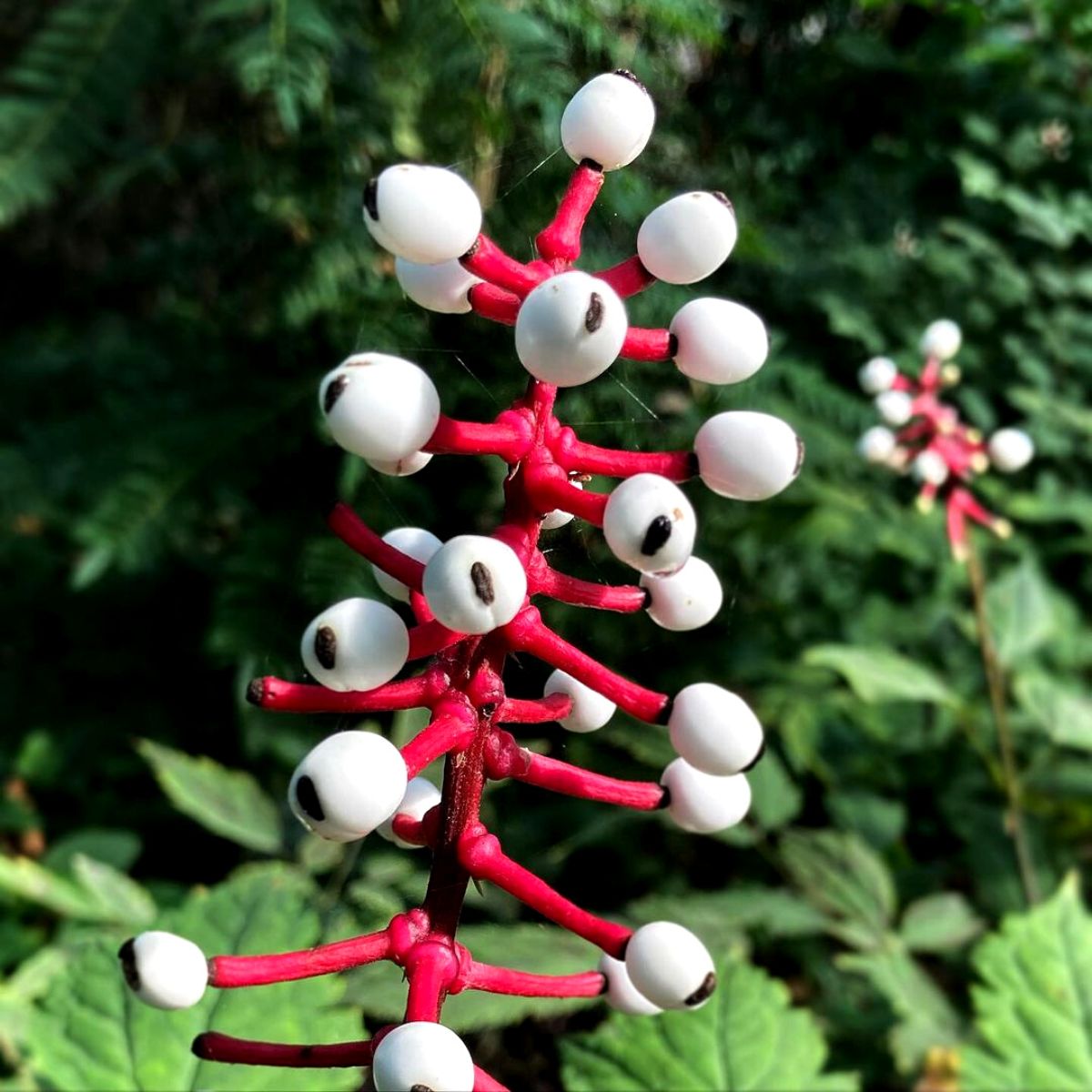
Photo by @ian_trought.
2. Japanese Blood Grass (Imperata Cylindrica)
Japanese blood grass earns its name from its blood-red haunting spikes. It is unquestionably one of the 10 strangest plants in the world. A perennial plant, Japanese blood grass is popular with gardeners because of its bold color, but it would not be a great option to place in a garden because of its scary look. This strange plant is also very flammable, burning at higher temperatures than native grasses, which can lead to wildfires.
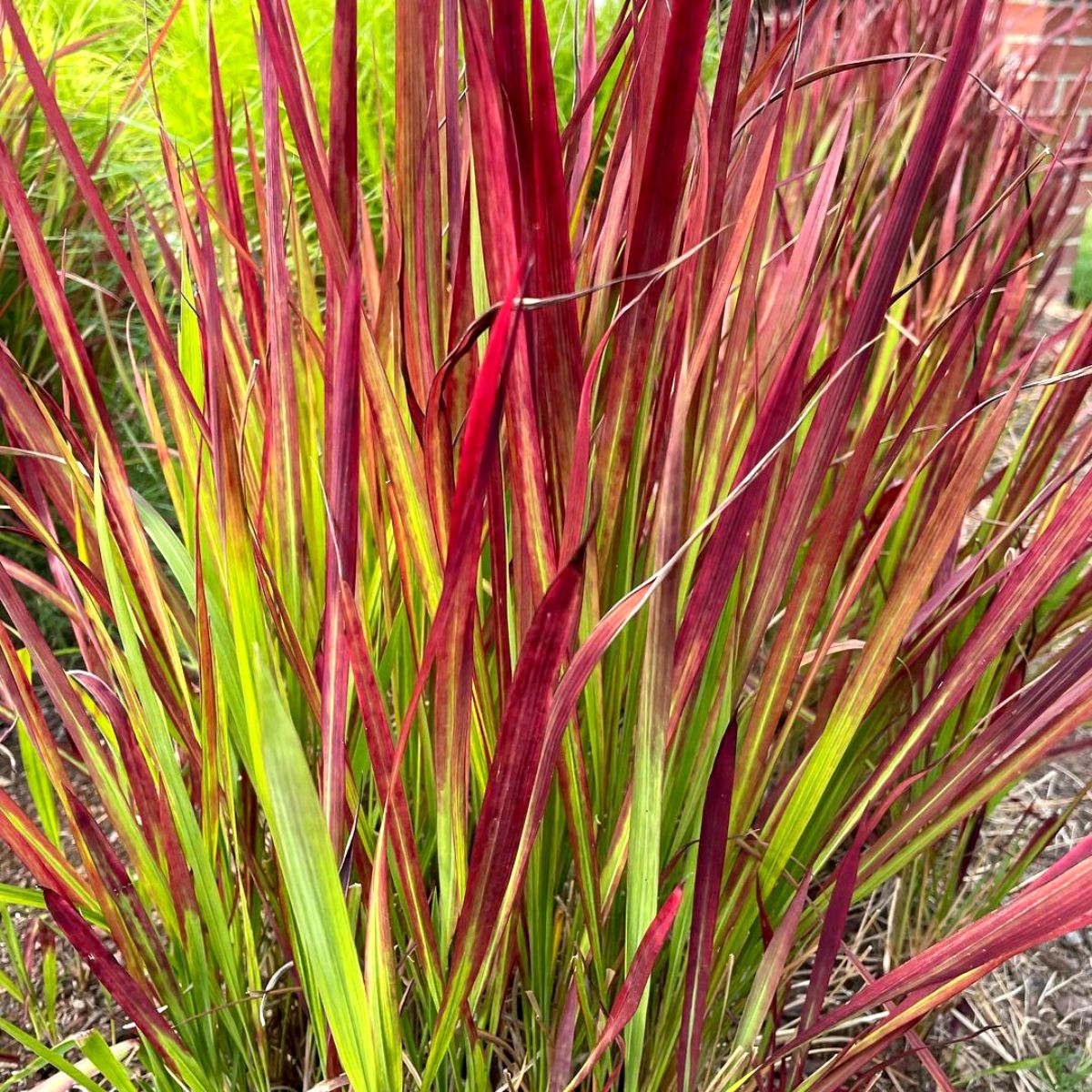
Photo by @theseattlegardener.
3. Witches Hair (Cuscata)
This is one of the strangest plants on the planet, and it can take us to a spooky Halloween decor night. Witches' hair, also known by the spooky name of strangle weed, is a genus of over 200 different parasitic plants. It is native to tropical climates but also appears in temperate areas, including the UK. Often identified as a mass of green, brown, or orange spaghetti-like substance hanging from other trees, this is one of the 10 strangest plants in our world. It lacks chlorophyll so it needs to feed on other plants to reproduce.
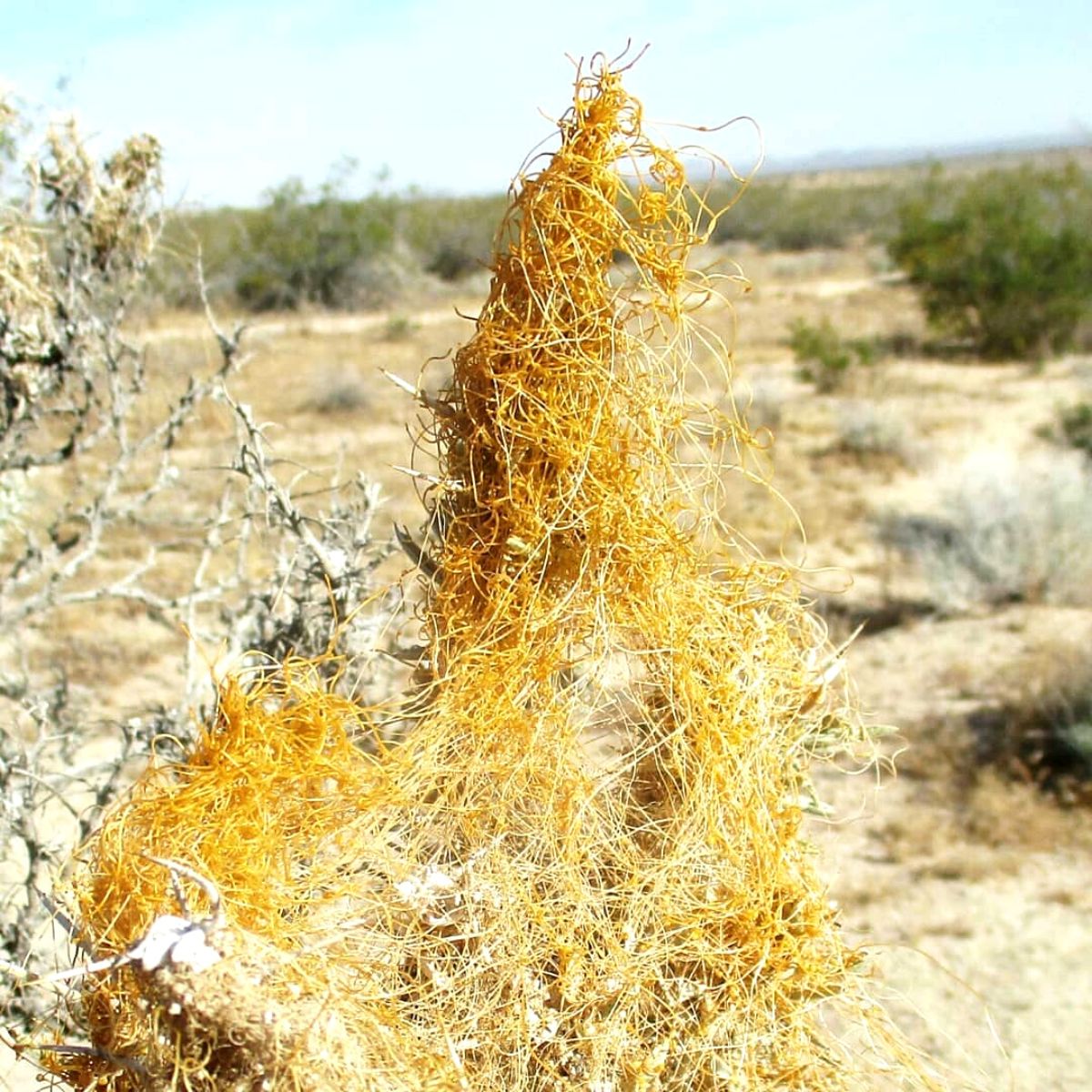
Photo by @mojavedesertsasquatch83.
4. Hemlock (Conium Maculatum)
It looks so beautiful, and it seems like you could have it in your backyard, but the truth is that this tiny plant is a poisonous invasive plant that can grow to heights of 2.4 meters. Although its appearance does not look strange, the roots and its level of poison make it one of the 10 strangest plants in the world. Specifically, its seeds and roots are very poisonous, and if being deadly was not enough to keep you away from this plant, hemlock also has a repulsive smell that the wind can carry. In ancient Greece, hemlock was used to poison prisoners, including the philosopher Socrates.
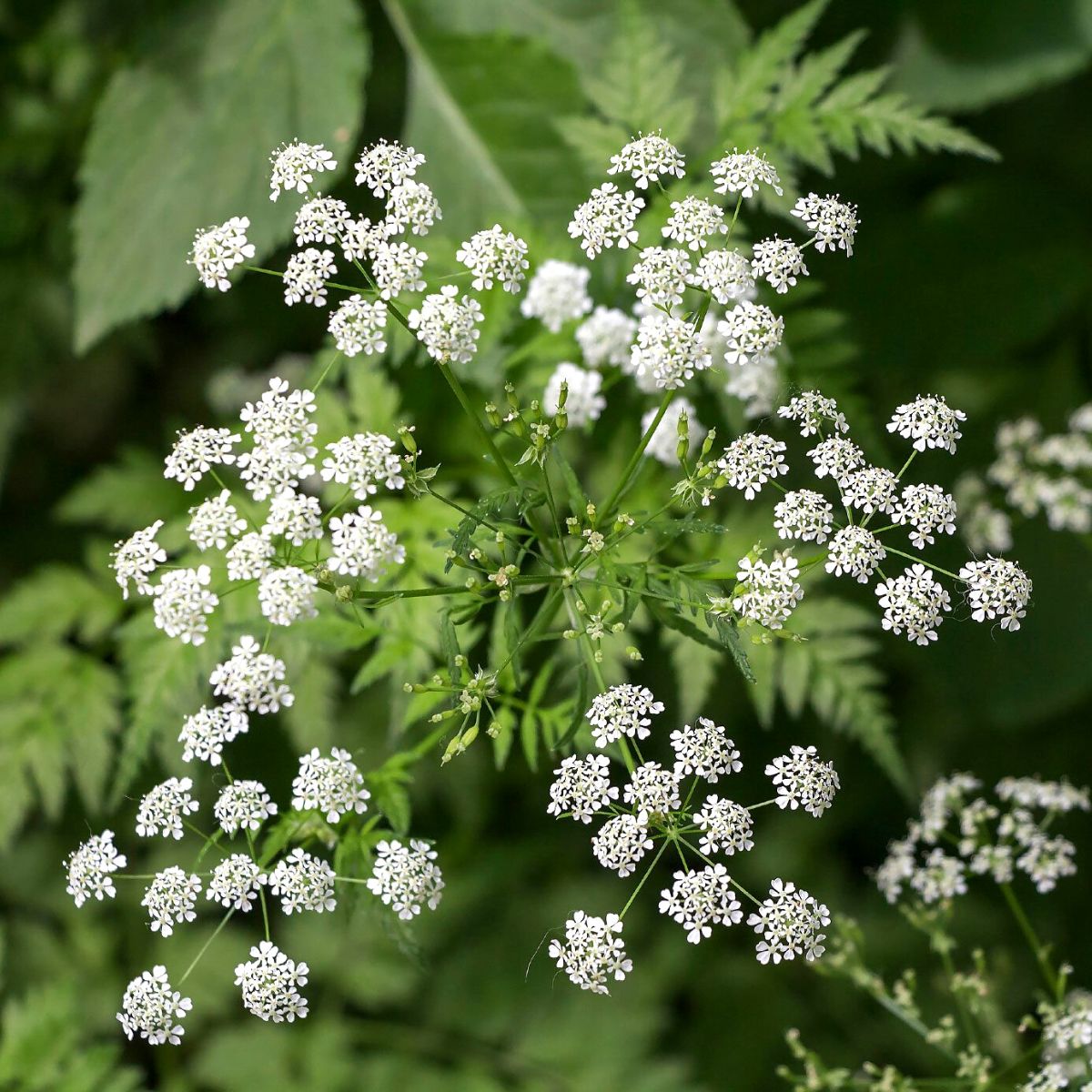
Photo found on Gardening Know How.
5. Carrion Plant (Stapelia Gigantea)
Being a flowering plant native to the desert regions of Tanzania and South Africa, the carrion flower, aka toad flower or star-shaped flower, earns its name from its repulsive smell. It's considered one of the world's strangest plants due to the rotting-flesh odor it releases to attract flies to pollinate it. Just imagine this: the plant smells so terrible that scientists are working on ways to use it as a suppressant for human appetite.
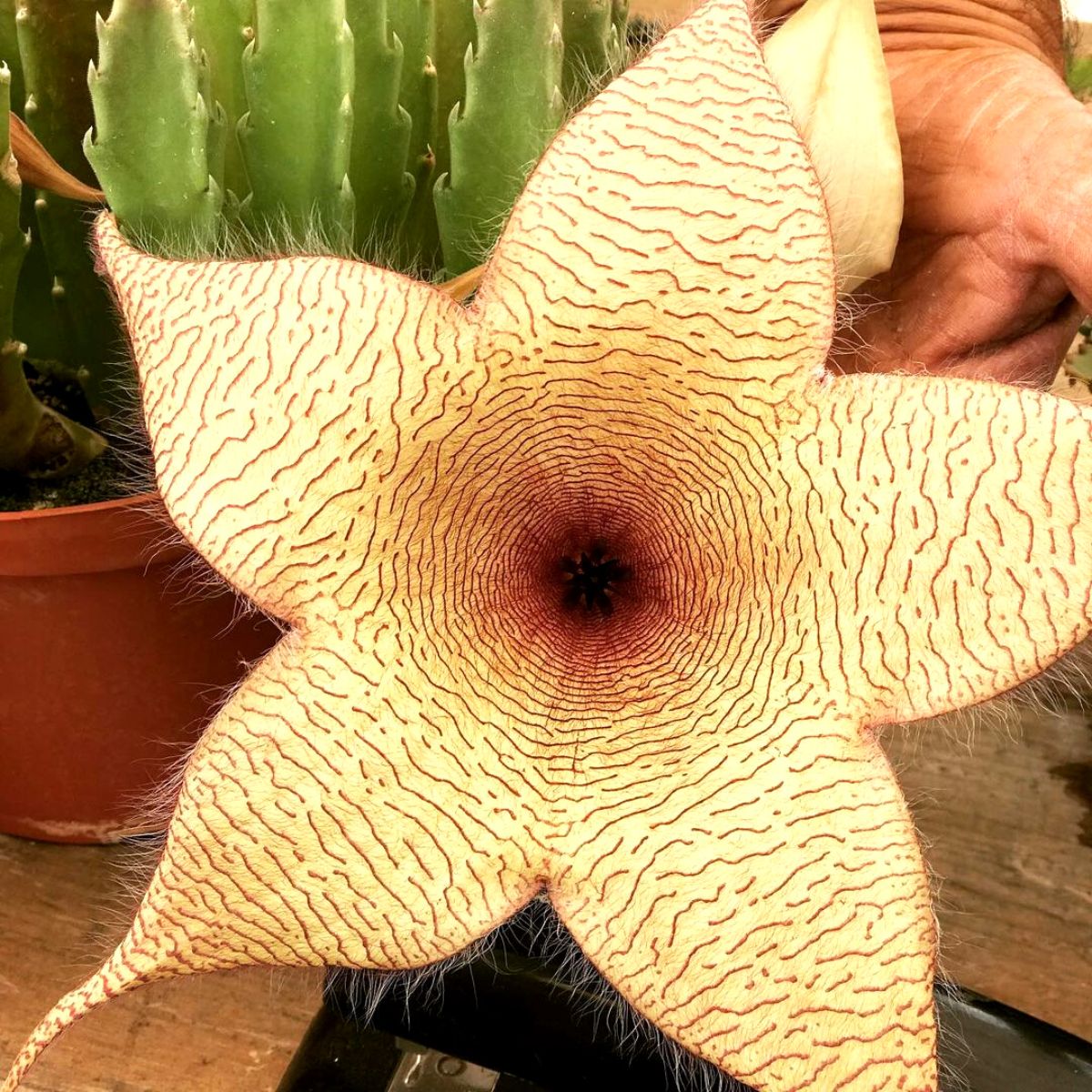
Photo by @wilderness.and.blossoms.
6. Cobra Lily (Darlingtonia Californica)
As the list continues, this plant definitely has a place in the 10 strangest plants ever seen. The cobra lily is a carnivorous plant that grows in bogs. Its name comes from its tubular top, which resembles a cobra's head, while its forked leaf looks like a tongue. The plant traps insects by luring them in, and once the prey is inside, light shining through the translucent hood prevents it from finding the way out. It's trapped in there forever!
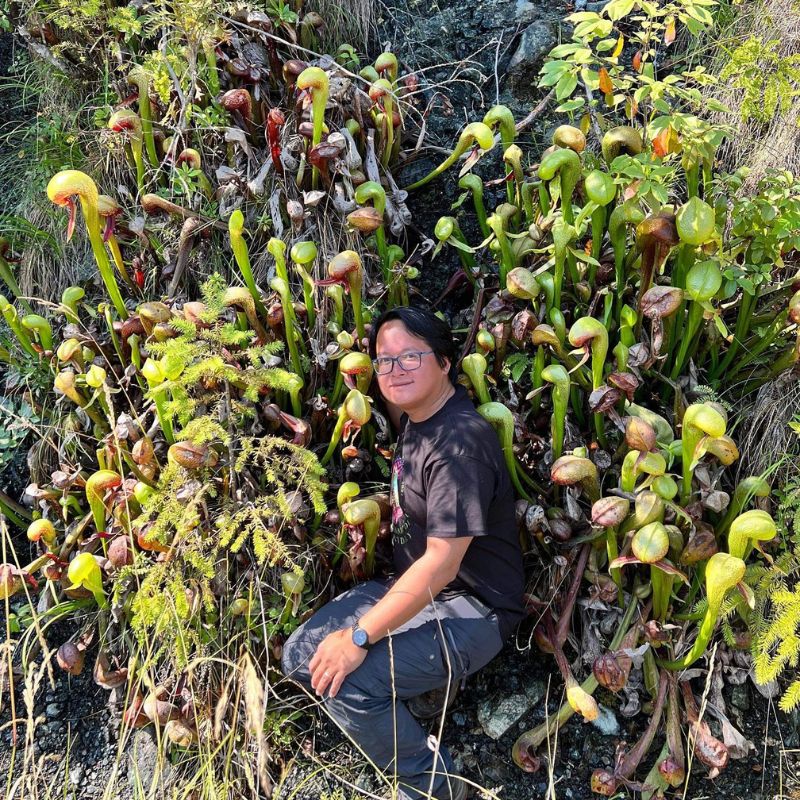
-Well… ". Picture by @a_gardens_chronicle
7. Corpse Flower (Amorphophallus Titanium)
The corpse flower, hence its shape, is another plant that reeks of rotten bodies when blooming. Corpse flowers can take five to ten years to bloom for the first time and may take another two to ten years to bloom again. It is known as one of the strangest plants to inhabit the earth as it has the largest unbranched group of flowers on the main branch, reaching heights of up to 3 meters. You can imagine why, in some countries, this plant goes by another nickname: penis plant.

Photo by @barnardcollege.
8. Venus Flytrap (Dionaea Muscipula)
The most iconic and known carnivorous plant award goes to the Venus flytrap! The plant's uncanny, seemingly sentient nature even made Charles Darwin describe it as "one of the most wonderful in the world." The plant uses sweet nectar to attract flies, and when one lands and triggers the fine hairs within the trap, the plant closes around the fly and digests its soft tissue with an enzyme.

Photo by @wicked.plants.qld.
9. Black Bat (Tacca Chantrieri)
The black bat plant has large black flowers measuring 30 centimeters and sprouts "whiskers" coming from the center of the plant, which reaches 70 centimeters in length. Due to its weird shape, texture, and color, it is one of the strangest plants on earth. It is found primarily in Southeast Asia and prefers forests and valleys in shady areas.

Photo by @jiffyplants.
10. Ghost Plant (Monotropa Uniflora)
Giving all the spooky vibes you need, the ghost plant gets its nickname from its unusual coloring—transparent. Because it completely lacks chlorophyll and does not need to photosynthesize due to its symbiotic relationship with fungi, it gets its nutrition through parasitism. This gives it a dainty glow and the ability to grow even in the darkest forests.
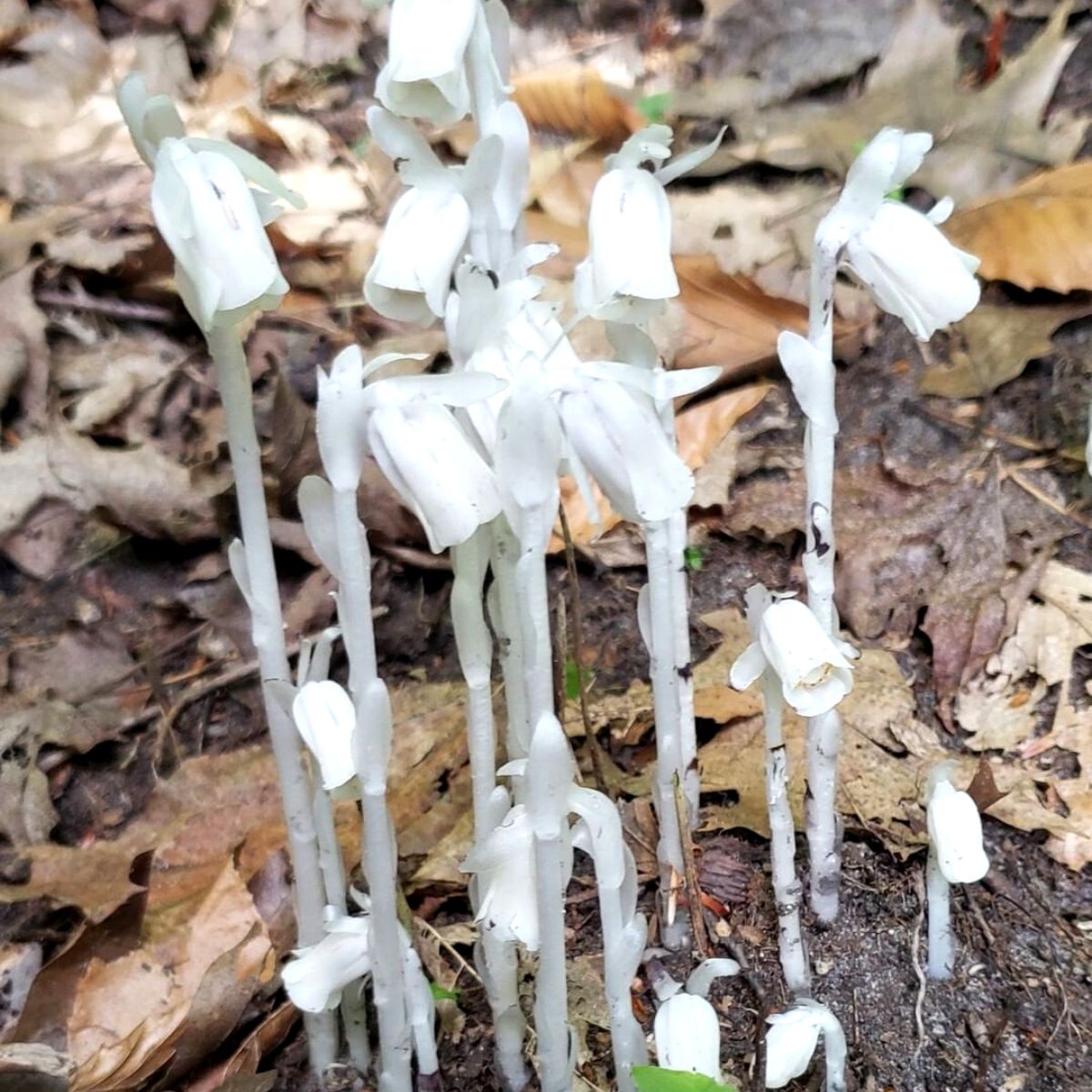
Photo by @rbgcanada.
Look out for the Strangest Plants on Your Next Trip
Suppose you're bound to visit some tropical forests, whether in the Americas or tropical forests in Asia. In that case, you can also probably encounter some of the strangest plants shown in the article. Also, if you're a plant advocate and love the idea of finding new species and plants, it's best to find a specialized plant professional who could guide you into your next forest adventure, finding more and more strange plants around the world.
Featured and header image by @theflytrapgarden





